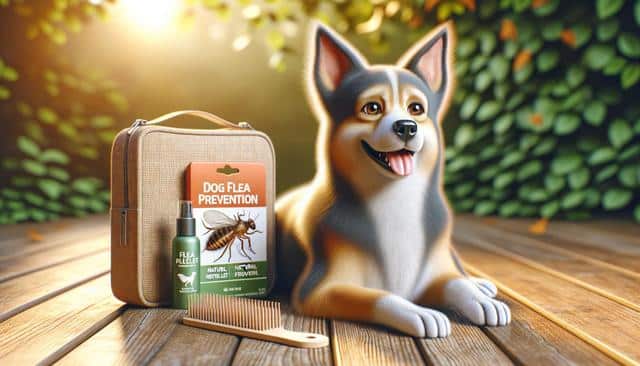
A Practical Guide to Keeping Your Dog Comfortable and Free from Fleas
Recognizing the Signs of Flea Infestation
Understanding the signs of a flea infestation is crucial for every dog owner. Fleas are tiny, wingless insects that feed on the blood of their hosts, causing discomfort and potential health issues. Common indicators that your dog might be dealing with fleas include excessive scratching, biting, or licking of the skin. You might also notice red bumps or patches of irritated skin, particularly around the neck, belly, and base of the tail. Additionally, flea dirt, which looks like small black specks, may be visible on your dog’s skin or in their bedding. Being aware of these signs can help you take prompt action to alleviate your dog’s discomfort.
Effective Flea Prevention Methods
Once you recognize a flea problem, it’s vital to explore effective prevention methods. Several options are available to keep fleas at bay, ranging from topical treatments to oral medications. These treatments often work by disrupting the flea life cycle, preventing new fleas from hatching and infesting your dog. It’s important to consult with your veterinarian to determine the most suitable option for your pet. Additionally, maintaining a clean living environment is essential. Regular vacuuming and washing of your dog’s bedding can significantly reduce the risk of flea infestations.
Natural Remedies and Their Efficacy
For those who prefer a more holistic approach, there are various natural remedies available. Essential oils like lavender, peppermint, and eucalyptus are often recommended due to their flea-repellent properties. You can create a homemade flea spray by diluting these oils in water and applying it to your dog’s coat. However, it’s crucial to ensure that these oils are used safely, as some can be toxic to pets if not properly diluted. Additionally, dietary supplements like brewer’s yeast and garlic are sometimes suggested to make your dog less attractive to fleas. While natural remedies can be effective, they may not be as reliable as conventional treatments, so monitoring your dog’s condition is important.
Maintaining a Flea-Free Environment
Creating a flea-free environment is essential for preventing infestations. Regularly cleaning your home by vacuuming and washing fabrics can eliminate flea eggs and larvae. Consider using flea control products in your yard if your dog spends a lot of time outdoors. These products can help reduce the flea population in the external environment, providing an additional layer of protection. Keeping your dog groomed and bathed with a flea-repelling shampoo can also help minimize the risk of fleas hitching a ride on your pet.
When to Seek Professional Help
Sometimes, even the best efforts at prevention can fall short, and professional intervention may be necessary. If you notice persistent signs of flea infestation despite your preventive measures, it’s advisable to consult a veterinarian. They can provide a comprehensive treatment plan that may include more potent flea control products. Additionally, if your dog develops skin infections or allergic reactions due to flea bites, professional veterinary care is essential to ensure quick recovery and to prevent more severe issues.
Conclusion
Keeping your dog free from fleas is an ongoing responsibility that involves regular monitoring and preventive measures. By recognizing the signs of flea infestations early and employing a combination of effective treatments and environmental controls, you can ensure your pet remains comfortable and healthy. Always consult with a veterinarian for personalized advice, and remember that a proactive approach is the best way to keep your furry friend flea-free.